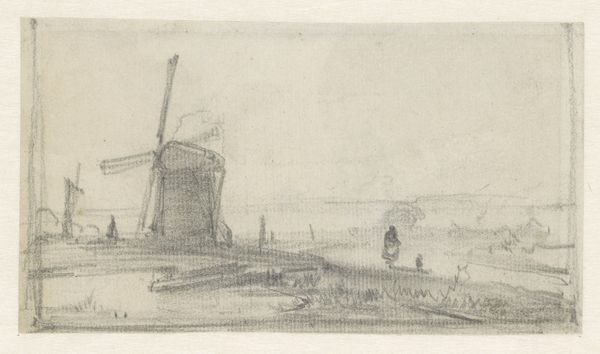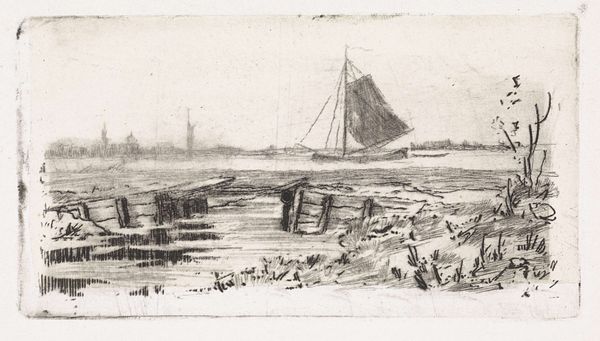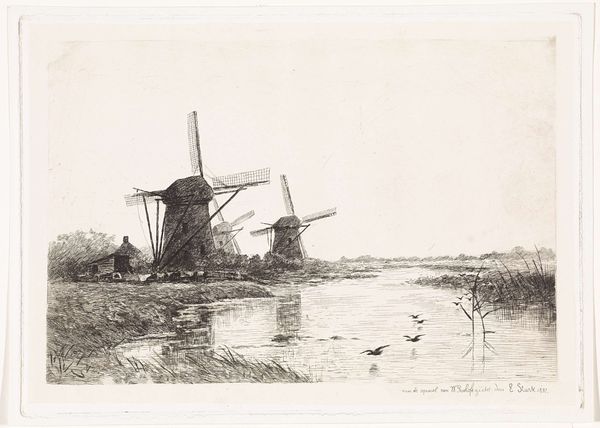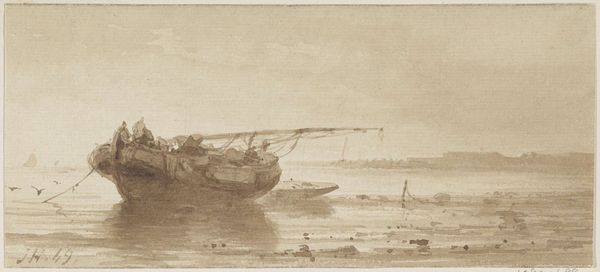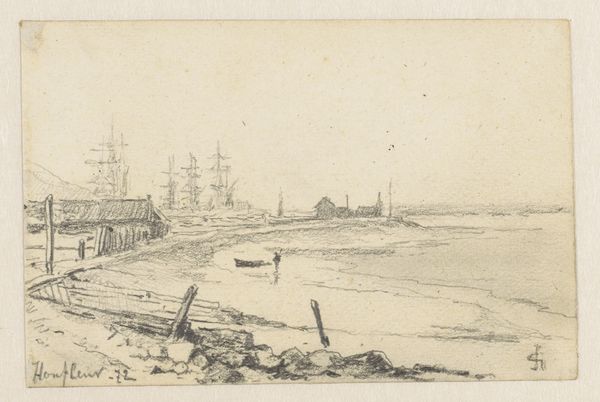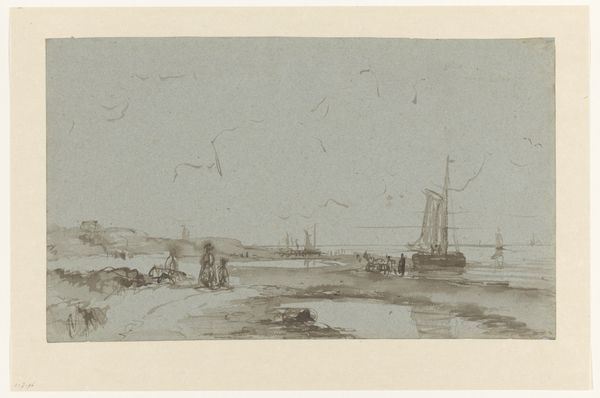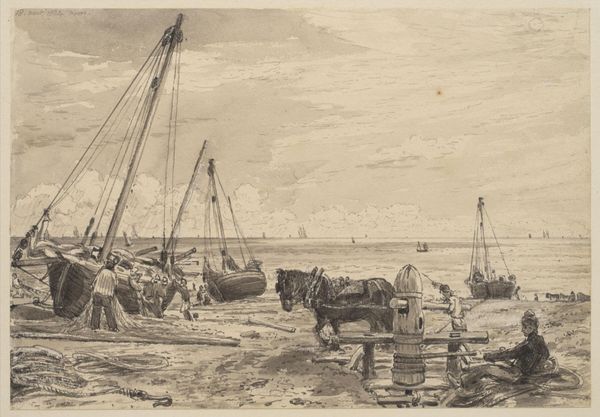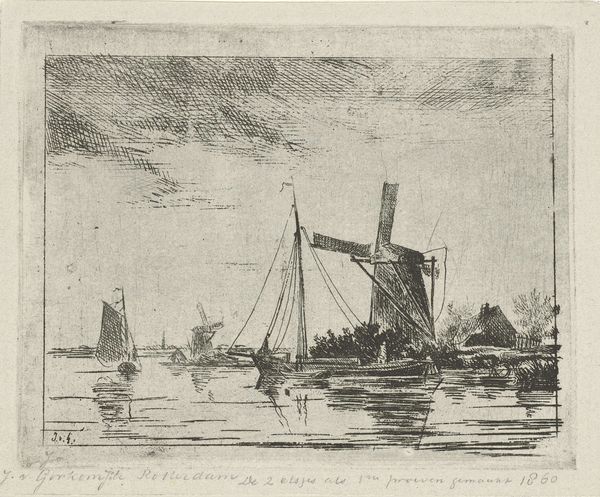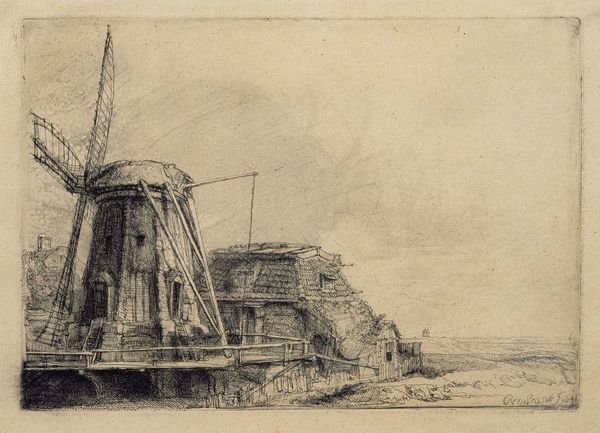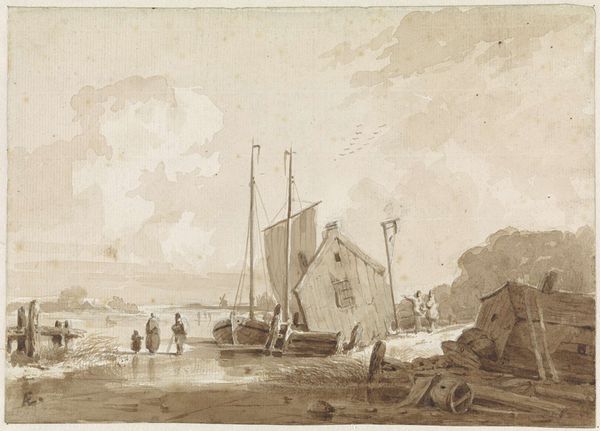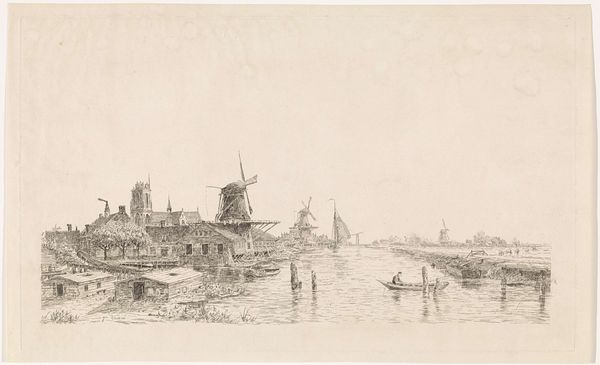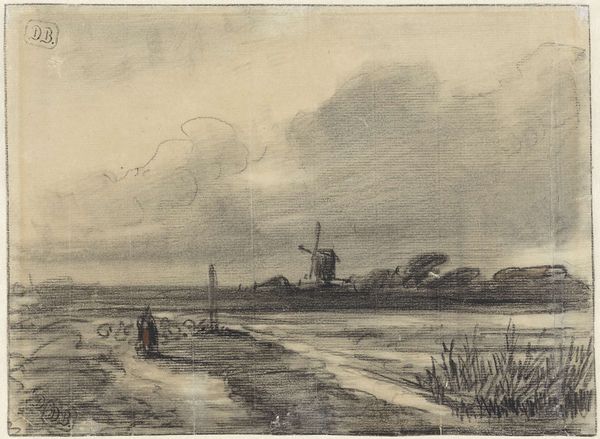
drawing, ink
#
drawing
#
dutch-golden-age
#
landscape
#
charcoal drawing
#
ink
#
realism
Copyright: Public domain
Rembrandt van Rijn created this pen and brown ink drawing of The Mill on the Het Blauwhoofd. It is evocative of the cultural and economic landscape of 17th-century Holland. Windmills, like the one depicted here, were not merely picturesque features but vital components of the Dutch economy. They powered the drainage systems that reclaimed land for agriculture and urbanization, and also served in industries such as milling grain and sawing wood. Rembrandt's choice to depict this subject reflects the prominence of these structures in Dutch life and their contribution to the nation's prosperity. His focus on such a quintessentially Dutch scene speaks to a sense of national pride and identity that was emerging during this period. If we study the archives from the period, we can see that Rembrandt was interested in representing the everyday life of the Netherlands. The meaning of the art is contingent on its social and institutional context.
Comments
No comments
Be the first to comment and join the conversation on the ultimate creative platform.
